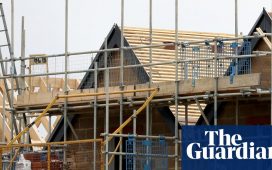Stay informed with free updates
Simply sign up to the Property sector myFT Digest — delivered directly to your inbox.
Chancellor Jeremy Hunt is drawing up plans for a 99 per cent mortgage scheme ahead of the Budget, according to officials, as the Conservatives seek to reassure voters that the party is on the side of homebuyers.
The scheme would only require home buyers to put down a 1 per cent deposit on their first home, with the government acting as a loan backer. The proposals aim to support people struggling to get a foot on the housing ladder.
Prime Minister Rishi Sunak has indicated he is determined to propose new housing measures in the coming weeks to reassure the electorate that his party represents the interests of homeowners.
Sunak said in a recent article in the Times that he “understand[s] people’s anger when that dream [of home ownership] feels too far away for too many, especially the younger generation”.
Although government figures cautioned no final decision had been made, they said the new Treasury-backed mortgage scheme was likely to be in the chancellor’s March 6 Budget.
But the proposals have prompted concern from some housing experts and lenders over the risk of buyers ending up in negative equity, where their debts end up bigger than the value of the home.
Neal Hudson, housing market analyst at Residential Analysts, said: “There would be a greater risk of negative equity obviously with this, you’d also be paying a premium mortgage rate, and it doesn’t necessarily address the problem of high prices.”
Lucian Cook, head of residential research at estate agency Savills, warned any scheme that boosted buyer numbers would need to be matched with measures to increase the supply of housing.
“You might be addressing the deposit affordability issue, but you’re still left with the mortgage affordability issue,” Cook said.
One industry figure warned the cost of the loans would likely be higher than on lower loan-to-value bands.
“The Prudential Regulation Authority could have concerns about banks’ exposure to 99 per cent loan-to-value mortgages, even if partially underwritten by government, and could look for additional capital buffers to support lending at this loan-to-value,” they added.
In 2021 the government introduced a 95 per cent loan-to-value mortgage scheme which officials say has helped close to 40,000 home buyers.
Under the new scheme, buyers would only have to put up £2,850 to buy a house at the UK average price of £285,000, compared to a deposit of £14,250 with a 95 per cent mortgage.
Sunak’s party is struggling to engage younger voters — who have found it increasingly hard to get in the property ladder — with only a tiny fraction of under-40s prepared to back the Conservatives at the general election, according to the latest polling.
House prices in the UK have risen by 60 per cent in the past 10 years. Meanwhile, the average age of a first-time buyer has risen to 32 from 29 in 2011.
The end of the Help to Buy equity loan scheme, which had been a totemic Conservative policy, has left the government in search of a new high-profile housing policy to counter the Labour party’s promise to be “the party of home ownership”.
A recent Opinium poll found 34 per cent of voters thought Labour would do a better job managing “housing/house prices”, versus just 16 per cent favouring the Tories.











